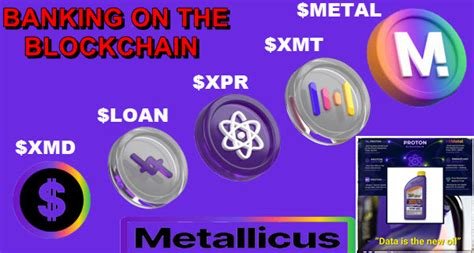BRIDGING FIAT CURRENCY WITH LARGE BANKS EMBRACING ISO20022 FINANCE!
The rise of tokenization by large banks
A narrative in the banking industry that has been building momentum for some time now, faster payments, may unlock the key to this merge of centralized and decentralized future for payments. Cryptocurrency, with over $3 trillion dollars in market capitalization and over $153 billion of that being stablecoins, the trend is clear. The tokenization of fiat currencies and real world assets (RWA) is inevitable.

Recently we have seen the rise of tokenization by large banks and funds, most notably the Blackrock Bitcoin ETF and BUIDL fund which essentially tokenizes the US Dollar and pays interest on-chain in USD, invests in cash, U.S. Treasury Bills and repurchase agreements. This is the first large institutional stablecoin offering on-chain, and it goes hand in hand with the securitized version of Bitcoin that trades today as the Blackrock Bitcoin ETF IBIT. This movement by traditional finance into the decentralized world is only the beginning of the marriage between CeFi and DeFi. One can only imagine, over the next decade, we will witness trillions of dollars of asset tokenization, from fiat currencies, to securities, to precious metals and everything in between.
Enter Marshall Hayner, the man with the vision of melding traditional finance and cryptocurrency, who has been hard at work on this problem for over a decade. Hailing from Upstate NY, and attending college at Northeastern University in Boston, Marshall was always fascinated with technology and the internet, particularly decentralized networks and encryption. In 2011 Marshall moved from Boston Massachusetts to San Francisco California and shortly thereafter began working in blockchain. Having been a spectator and hobbyist from the early day of Bitcoin (2009 and on) Marshall envisioned a time in which cryptocurrency would reach mass adoption, and that the early ethos of Bitcoin overtaking banks was incorrect, he believed that banks and consumers would ultimately embrace this technology.
Cryptocurrency, as Hayner saw it, would transform the world of payments through transparency, speed, efficiency and programmability. Marshall launched his first cryptocurrency startup QuickCoin in 2013, a simple, easy-to-use Bitcoin wallet that could be created and managed through your Facebook account. Shortly thereafter he would leave QuickCoin to join Stellar Development Foundation, get obsessed with Dogecoin and eventually go on to create his vision for the future of blockchain, Metallicus.
Fundamental major hurdles to crypto adoption
At Metallicus, Marshall worked with his co-founder, Glenn Marien (who coincidentally built the first Dogecoin wallet Dogechain.info, where they met) and team to begin building this vision for merging traditional banking and blockchain with the launch of Metal Pay in 2018. Metal Pay allowed consumers the first opportunity to have a regulated bank account paired with crypto trading and payments in the US.
With the launch of the Metal Pay app, the Metal DAO, a decentralized autonomous organization, based around the Metal ecosystem began. From the Metal DAO a cohesive ecosystem for banking and payments emerged. A fast and relatively free payments network was needed without gas-fees, that could easily support decentralized identity, and XPR Network was born.
Traditionally, the crypto space had not embraced compliance and regtech (regulation technology), rather it initially favored a more anarchist state. This culture ultimately led to multiple boom and bust cycles in which, eventually the mainstream and the industry itself began to realize: compliance and identity on-chain could actually unlock the keys to massive growth. The blueprint to building the bridge from the world of blockchain to traditional banking was formed.
From this vision Hayner immediately began working with his team at Metallicus to build Metal Dollar (a stablecoin index basket), Metal Identity (a decentralized identity protocol for multiple chains), Metal X (an open source decentralized trading engine), WebAuth Wallet (a non custodial crypto wallet focused on Web Authentication) and Metal Blockchain (a layer zero blockchain that could host public and private ledgers for institutions).
Positioning banks to have their own private ledgers
With the rise of L1s, it became clear, banks would not be launching on existing blockchains, rather their interest remained in having their own private ledgers that could eventually some day interact with public ledgers like Bitcoin and Ethereum. The concept of L0, albeit a relatively new one, is to position the banks to have their own private ledgers which increase efficiency and accountability, while allowing them to settle assets between each other relatively instantly.
Additionally, a notion of decentralized identity for consumer, business and government is critical for maintaining BSA (Bank Secrecy Act) compliance on-chain. The message instantly resonated and Metallicus began to welcome banks and Credit Unions into its ecosystem with the Metal blockchain Banking Innovation program launched earlier this year.
Since then, Hayner and Metallicus have focused on using the framework created by XPR Network (fast instant payments, low resource costs, scalable, decentralized identity) as a template for other banks to launch their own ledgers, while having their own stablecoins and DeFi ecosystems and beyond. XPR Network, ultimately, would evolve to become a subnet of Metal blockchain, forming one cohesive chain.
Metal DAO would go on to pass a governance proposal to form Metal L2, building a bridge between the bulk of DeFi activity on Ethereum and the Optimism Superchain, directly into Metal blockchain. Imagine the day that you could fluidly move a dollar from your checking account to the blockchain, and directly from the chain into your savings account, instantly. That day is coming soon if Hayner has anything to say about it. According to Hayner: he envisions “A day in which we stop working for money, and money begins working for us”.
